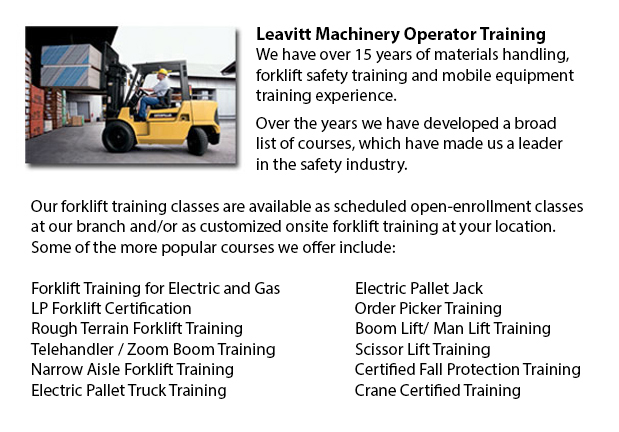
Aerial Lift Training Ontario - Aerial forklifts are able to accommodate various duties involving high and hard reaching places. Normally utilized to perform regular preservation in buildings with tall ceilings, prune tree branches, elevate heavy shelving units or patch up phone cables. A ladder could also be used for many of the aforementioned projects, although aerial lifts offer more safety and strength when properly used.
There are a lot of designs of aerial hoists available on the market depending on what the task required involves. Painters sometimes use scissor aerial jacks for example, which are grouped as mobile scaffolding, effective in painting trim and reaching the 2nd story and higher on buildings. The scissor aerial lifts use criss-cross braces to stretch and extend upwards. There is a table attached to the top of the braces that rises simultaneously as the criss-cross braces elevate.
Bucket trucks and cherry pickers are another type of aerial lift. They possess a bucket platform on top of a long arm. As this arm unfolds, the attached platform rises. Forklifts use a pronged arm that rises upwards as the handle is moved. Boom lifts have a hydraulic arm which extends outward and raises the platform. Every one of these aerial platform lifts require special training to operate.
Training programs presented through Occupational Safety & Health Association, acknowledged also as OSHA, cover safety procedures, system operation, maintenance and inspection and device weight capacities. Successful completion of these training courses earns a special certified certificate. Only properly licensed people who have OSHA operating licenses should drive aerial lifts. The Occupational Safety & Health Organization has established rules to uphold safety and prevent injury when utilizing aerial hoists. Common sense rules such as not utilizing this machine to give rides and ensuring all tires on aerial lift trucks are braced in order to prevent machine tipping are referred to within the guidelines.
Unfortunately, statistics illustrate that in excess of 20 operators die each year when operating aerial lifts and 8% of those are commercial painters. The majority of these accidents are due to improper tire bracing and the hoist falling over; therefore several of these deaths were preventable. Operators should ensure that all wheels are locked and braces as a critical security precaution to prevent the instrument from toppling over.
Marking the neighbouring area with obvious markers need to be used to safeguard would-be passers-by so they do not come near the lift. Moreover, markings should be placed at about 10 feet of clearance between any power cables and the aerial hoist. Hoist operators should at all times be well harnessed to the lift while up in the air.
-
Scissor Pallet Trucks
Scissor Pallet Truck Training Ontario - Scissor pallet trucks are built for moving and lifting singly stacked pallets by integrating a lifting apparatus that allows the pallets on the truck to be elevated. This apparatus is a first-rate instrument fo... More -
Reach Trucks
Reach Truck Training Ontario - Reach Trucks are mechanized equipment utilized for loading and storage in certain businesses that maintain storage of materials to finished merchandise on a pallet which are then inserted into lofty shelving units. This... More -
Clark Forklift
Clark Forklift Forklift Training - Presently, there are no less than 350,000 Clark forklifts performing globally, and upwards of 250,000 in service in North America alone. With five major lines across the world, Clark is proud to be one of the most e... More -
Doosan Forklift
Doosan Forklift Training Ontario - Doosan Infracore Company Ltd. is an international organization consisting of Diesel Engines, Defense Industry goods, Industrial Vehicles, Construction Technologies and Machine Tools and Mechanization Systems. I... More -
Hyster Forklift
Hyster Forklift Training Ontario - Hyster is globally renowned as an industry leader in the lift truck producing business. However, it started as a manufacturer of lifting equipment and winches. Most of its production was concentrated in the Pacifi... More

Forklift Certification Ontario
TOLL FREE: 1-888-254-6157
Toronto, Ontario
forkliftcertificationontario.com
Email Us
About Us


